|
This picture shows a typical no-name ukulele probably from the twenties. It is made from a hard wood, likely birch, stained to resemble mahogany or koa wood. As is usually the case, the top and back were coming apart.The method of clamping is shown. The rod and wood blocks are used to pull the neck into the proper position so that the action will remain easy. Titebond glue is used. Don't tighten the clamps too much or you may crush your uke. If your uke has wooden pegs which are missing they can usually be replaced with 1/2 size or 3/4 size violin pegs but you will have to drill a small hole near the end of the pegs for the strings. On a lot of the old ukes the twelfth fret is missing since it was in the space between the neck and the body and came out as the wood dried. You do not have to replace this fret because you can play the note by holding the string down with your fingernail (assuming that there is no 13th fret). When the above uke was repaired it had good intonation and a pleasant tone. After being tuned and played for a couple of weeks, the tone improved a lot and the uke sounded better than many of the name-brand ones. The twelfth fret was missing as usual. After you tune the uke you will probably notice some more places where the wood has cracked or separated and you will have to fix those also.
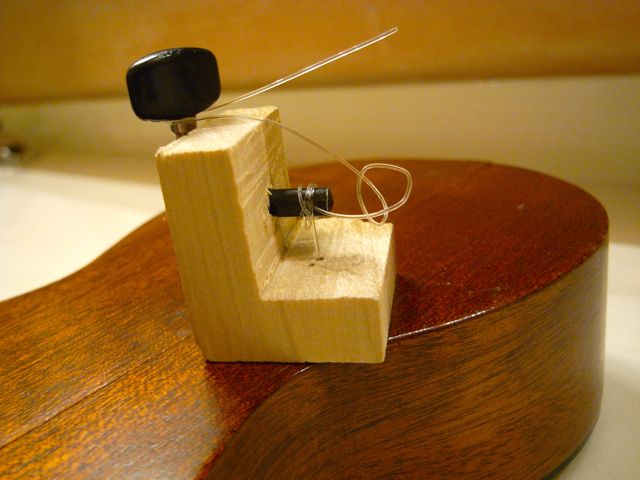
The above picture shows a high quality vintage uke in which the back had split and come loose from an internal strut which still remained glued to the other side of the bottom of the uke. The device shown employs a geared ukulele or guitar tuner to tighten the ukulele string which has been passed through a tiny hole that was drilled through the back of the ukulele and through the strut that was loose. On the other end of the string is a button. Glue was squirted between the strut and the back from a syringe before the string was tightened. The hole was drilled with the smallest drill from a set of numbered drills, #60, .040 inches, about 1mm. Make sure everything goes together properly before you apply the glue. Practice repairs on cheap broken ukes before working on a good one. The type of dark mahogany in the above uke was used almost exclusively in high-quality instruments resulting in some of the best-sounding and loudest ukuleles ever made (e.g.Martin.) It doesn't appear in ukuleles made today and is probably of a type of mahogany that is on the endangered list and cannot be sold today.
Many vintage ukuleles will come with the bridge detached or loose. See the Repair Gallery of this website for two methods of regluing the bridge. If your vintage uke is a high quality one, small screws holding the bridge in place will not affect the sound provided the bridge is tightly held against the top of the uke. I advise against buying a ukulele for which the original bridge is missing.
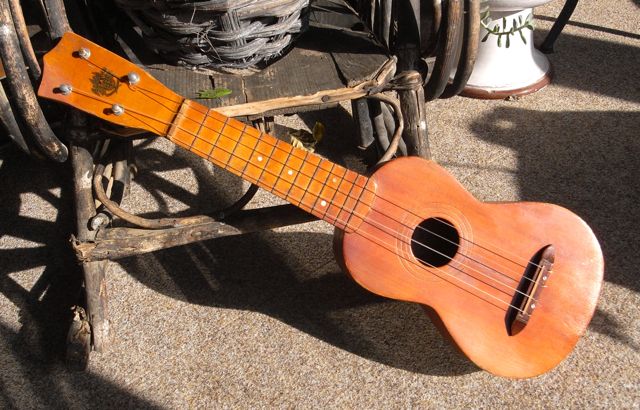
This a ukulele made in Japan, probably for sale to tourists in Hawaii. It is the same ukulele shown on the Repair Gallery page of this website as an example of how to reglue the bridge usung screws instead of clamps. In this picture,you can see the small scews in the bridge which have been left in place for added strengh. They do not affect the sound. The uke is made from a soft wood such as cedar and has a pleasant tone but is not loud, which is fine with me since I can not sing very loud. It weighs less than most modern ukes. Various versions of this uke are frequently sold for under 50.00, but they usually need repairs. The decal on the headstock is similar to the ones on some of the Royal Hawaiian hotel ukes (which were usually of a much higher quality).
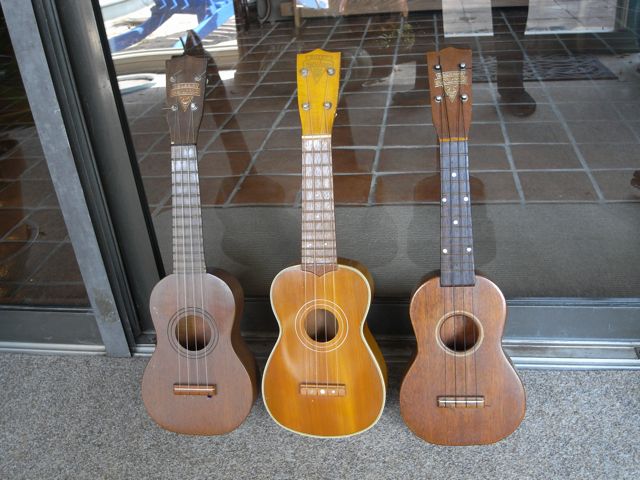
Three Bobby Henshaw ukuleles, each one totally different from the others. The one in the middle sounds pretty good, the one on the left has no volume and the one on the right sounds a little better than OK. The middle ukulele came with a screw under the white dot in the center of the bridge. I added two more small screws as the bridge was starting to come loose at the sides of the bridge. These ukuleles must have come from three different manufacturers. I have seen other Bobby Henshaw ukuleles that are totally different from those shown above. Bobby Henshaw was a vaudeville star and ukulele player, not a manufacturer.
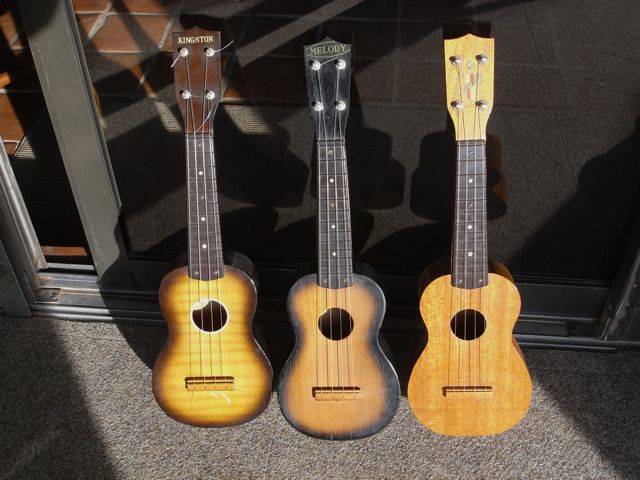
Kingston, Melody and Regency ukuleles were all made in the same factory in Japan. They are very similar to Harmony ukuleles of the 50's and possibly better in some ways. The tuning buttons appear to the same as the Harmony ones but on closer inspection are different and seem to be made of tougher and harder plastic. These ukuleles play easily and sound good except for one recent one I bought that had no volume or tone. They can usually be bought for well under $50.00.
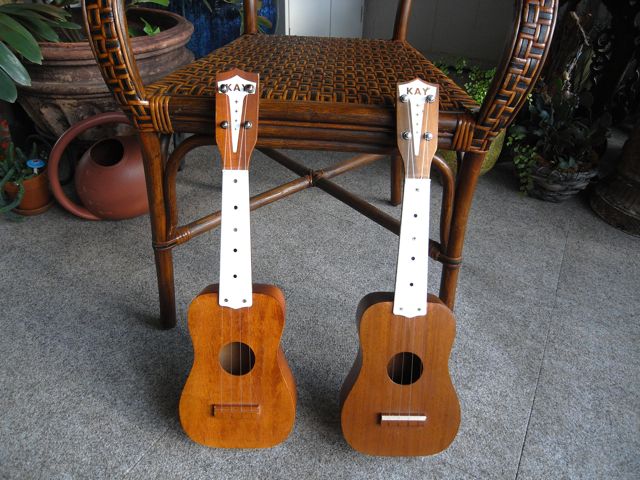
Shown here are two Kay ukuleles. The one on the left is plywood. The one on the right is made od solid mahogany for the top and back. The sides are mahogany plywood to prevent splitting. The one on the left plays easily and sounds good. The solid mahogany uke on the right is louder and sounds better. Both of these ukes needed repairs to make them playable, which will usually be the case with Kay ukuleles. They are usually available for under $50.00.
|